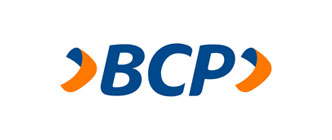
Concurso de
Becas y semibecas
Examen 14 de setiembreE
ADMISIÓN 2025 - CAMPUS PIURA
Regístrate y recibe información sobre nuestros concursos de becas y semibecas.
Información
Fecha de examen del concurso de Becas y semibecas
Sábado 14 de setiembre del 2024
Hora del examen
3:00 p.m en Campus Piura
Plazo de inscripción
Del 30 de agosto al 09 de setiembre del 2024
Becas
Universidad
de Piura
Concurso de becas
Cubre las pensiones académicas desde el primer periodo académico.
Beca coro
Beneficio para los integrantes del coro universitario*.
Beca de facultad
Para alumnos UDEP con alto rendimiento académico*.
Seleccionado UDEP
Para alumnos que son parte de una selección deportiva UDEP*.
Beca Instituciones educativas públicas
Alumnos que cursan, este año 2021, el quinto grado de educación secundaria.
Beca Coar
Las becas Colegios de Alto Rendimiento (COAR) están dirigidas a alumnos de la Red de Colegios a nivel nacional.
* El alumno puede acceder a este beneficio a partir del tercer periodo académico o segundo año de la carrera.
Becas del
Estado
Desde el 2012 mantenemos la condición de Universidad elegible para las convocatorias del Programa Nacional de Becas y Crédito Educativo (Pronabec) dirigidas a los jóvenes con talento que deseen estudiar.
Becas para hijos de docentes de la Carrera Pública Magisterial que lograron alto rendimiento académico en los dos últimos grados de la educación secundaria…
Estudiantes de buen rendimiento y escasos recursos económicos de universidades no licenciadas, para continuar o empezar estudios de pregrado en Universidades Licenciadas.
Estudiantes de universidades públicas o privadas licenciadas, o de escuelas de educación superior o institutos tecnológicos y pedagógicos públicos y privados licenciados.
Para ser beneficiario de esta beca, es necesario obtener una vacante únicamente a través de la modalidad del Concurso de Becas y Semi becas de la UDEP.
Estudiantes peruanas de alto rendimiento académico que cursan el quinto año de secundaria en el año 2020.
Jóvenes egresados del nivel de educación secundaria en el año 2019, que procedan de las instituciones educativas públicas o privadas de la Educación Básica Regular…
Becas dirigidas a jóvenes peruanos con alto rendimiento académico y bajos recursos económicos que han culminado la secundaria en un colegio público o particular.
Becas de la
Empresa privada
A través de convenios o programas especiales, la empresa privada suma esfuerzos para impulsar el desarrollo de jóvenes con alto potencial académico a través de la educación.

Iniciativa que busca brindar acceso a una educación superior, universitaria y técnica de calidad a jóvenes talentosos del Perú.

El objetivo es contribuir con el desarrollo de los pueblos cercanos a las Centrales Hidroeléctricas de Poechos y Curumuy.

Carreras
- Administración de empresas
- Arquitectura
- Comunicación audiovisual
- Comunicación de marketing
- Contabilidad y auditoria
- Derecho
- Economía
- Educación inicial
- Educación primaria
- Educación secundaria: Lengua y literatura
- Educación secundaria: Matemática y física
- Educación secundaria: Historia y ciencias sociales
- Educación secundaria: Lengua inglesa
- Historia y gestión cultural
- Ingeniería civil
- Ingeniería industrial y de sistemas
- Ingeniería mecánico eléctrica
- Periodismo
Nuestros
Contactos
Piura, sur del Perú y extranjero
- Valeria Cahuas
- valeria.cahuas.q@udep.edu.pe
- 956 823 150
- Ana Paula Coz
- ana.coz.s@udep.edu.pe
- 945 397 355
Tumbes, Talara y Sullana
- Carol Viñas
- carol.vinas@udep.edu.pe
- 945 772 401
Chiclayo, Jaén y Pacasmayo
- Fiorella Ruiz
- fiorella.ruiz@udep.edu.pe
- 979 547 819
TRUJILLO, CAJAMARCA Y CHIMBOTE
- Andrea Vega
- andrea.vega@udep.edu.pe
- 959 526 814